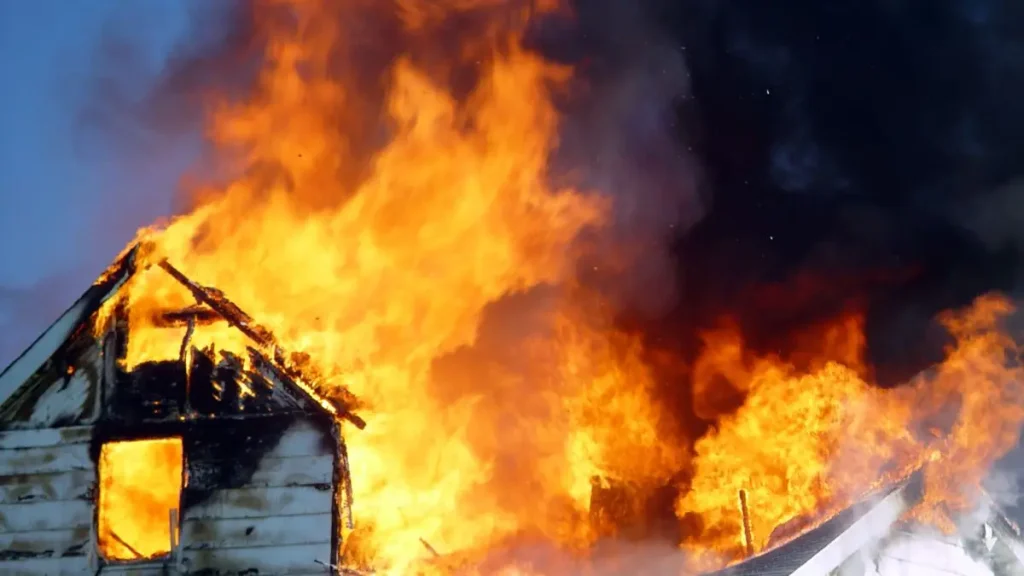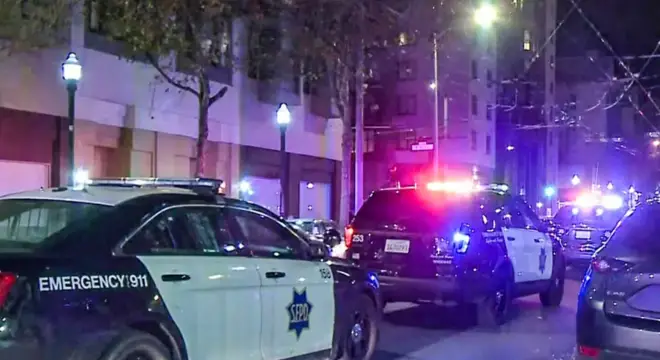Springfield Firefighters Battle House Fire That Spilled Into Vegetation
I was scrolling through local updates when I saw the alert: fire crews were rushing to a house fire on D Street in Springfield’s Thurston neighborhood. It happened just after 5 p.m.—the kind of time when people are usually settling in at home, not running for safety.
The location immediately raised alarms. This isn’t just a street with homes—it’s close to brushy wildland, full of dry trees and thick vegetation. According to Fire Chief Mike Caven, that mix made the situation “concerning.” And he wasn’t exaggerating. Once the house caught fire, it didn’t take long for flames to leap into the nearby brush.
Crews arrived within minutes, which likely stopped it from becoming a full-blown wildfire. But by the time they were on scene, the house was already heavily involved. The structure is now about 80% gone.
There’s still no word on whether anyone was injured, but multiple teams stayed on scene long after, working to control hot spots and monitor the wildland edge.
Your turn: If you live near heavy brush or wooded areas, how prepared is your property for a fast-moving fire like this? Let’s talk about what really makes a home fire-safe—drop your thoughts in the comments.
80% Damage to Home: Crews Still Battling Flames
When I read that the house was nearly 80% destroyed, it hit hard. That’s not partial damage—it’s a near-total loss. According to KVAL News, the fire had already taken over most of the structure by the time crews got there.
And even though they arrived quickly—just about three minutes after the call—that short window wasn’t enough to save the home. That’s how fast these things escalate, especially when wildland is involved.
As of the last update, firefighters were still on the scene, making sure the house fire didn’t flare back up or push further into the brush. They haven’t confirmed if anyone was hurt yet, but anytime crews stay behind that long, it means there’s still serious risk hanging in the air.
If you’ve ever thought you’d have “enough time” in a fire, this should be a wake-up call.
Sadly, quick damage like this isn’t rare—another recent fire in Maine left one person dead before crews could respond, showing just how short the window can be.
Why This Fire Was Especially Dangerous: The Wildland Threat

I’ve seen plenty of house fires get contained quickly—but this wasn’t just a house fire. What made this one especially dangerous was where it happened: right next to brush-heavy wildland.
That’s what Fire Chief Mike Caven pointed out too. He said the location itself was a concern because of the trees, brush, and dry vegetation surrounding the area. All it takes is a few embers to turn a structure fire into a wildland blaze—and that’s exactly what started happening here.
Crews were able to get the wildland spread under control, but it wasn’t easy. The fire moved fast, fueled by dry conditions and thick vegetation. In areas like Springfield, where residential zones back right up to nature, these risks aren’t rare anymore. They’re part of daily reality now.
And the worst part? Most of us don’t realize how unprepared we are until we’re watching flames from our front lawn.
Have you ever thought about how close your home is to dry brush or wildland? Drop your thoughts or fire safety tips in the comments—let’s learn from each other’s experience.
Challenges Firefighters Faced: Speed, Access & Terrain
I don’t know if you’ve ever seen fire crews working in a neighborhood like Thurston, but it’s not always a smooth operation. Access gets tricky—especially with brush, fences, and tight roads.
That’s exactly what made this fire tougher to fight. According to a Facebook update from Eugene Springfield Fire, crews had to battle not just flames but also the environment itself. The post mentioned that this was their second structure fire of the day, and by the time they reached D Street, they were already stretched.
Thick brush and trees slowed their entry. Firefighters had to carve their way through tight terrain to even reach the house fully. In past fires, they’ve had to use chainsaws just to get through overgrowth—and it wouldn’t surprise me if something similar happened here.
When we think about fire response, we often picture trucks rolling in and water spraying. But the truth is, just getting to the fire can be half the battle—especially when overgrown lots and dense vegetation get in the way.
Firefighters often deal with limited access and brush build-up, just like they did during the Clayton fire, where a man was later found dead inside the home.
Springfield’s Growing Risk Zones: Are We Really Prepared?
If you live anywhere near Springfield—or any Oregon city with greenbelt zones—you’ve probably noticed how homes are creeping closer to wildland areas.
What happened on D Street isn’t a one-off. It’s part of a growing pattern where suburban development meets wild nature—and we’re often not ready for what that means.
Fire Chief Caven made it clear: homes that border brush and trees are in danger if not properly maintained. That means clearing dry vegetation, trimming trees, and creating what fire experts call “defensible space.”
There’s a reason organizations like Firewise USA and FEMA push homeowners to take prevention seriously. When I looked into the data, I found that homes in wildland-urban interface zones are significantly more likely to be lost in fires—not just damaged, lost.
If you’re thinking, “This probably won’t happen to me,” ask yourself this: would the D Street family have thought it would happen to them?
Lately, I’ve been following local fire alerts and homeowner safety tips through a WhatsApp channel that curates real-time updates—it’s helped me stay sharp during peak fire weeks.
Emergency Response & What You Need to Know Right Now
Even if you weren’t directly affected by this fire, it still matters. The smoke wasn’t just limited to one block—it could be seen from across Springfield. If you were outside Monday evening and noticed the air felt off, this was why.
Roads like D Street and 69th were closed off for hours, which caused traffic detours and delays in the area. And when you have fire crews stretched thin responding to multiple calls in a day, community response matters even more.
If you’re in the area, stay updated through official fire department posts or sign up for local emergency text alerts. Know your escape routes. Have your essentials bag ready. And talk to your neighbors—fire safety isn’t just about individual homes, it’s about connected communities.
I always say this: in fire zones, you don’t react—you prepare.
These long shifts and back-to-back calls aren’t just tough—they’re dangerous for responders too. In a recent incident, two firefighters in Kennewick were treated for heat exhaustion after battling a house fire.
Protecting Your Home: 5 Wildfire Safety Steps You Can Start Today

Let me be honest: most of us don’t take fire prevention seriously until we’ve seen the flames too close to home. But after D Street, I’d rather you and I both do something now than regret doing nothing later.
Here are five simple things you can check off your list starting today:
- Clear out dead plants, grass, and leaves within 30 feet of your home
- Trim trees and shrubs, especially if they hang over your roof
- Clean gutters and vents—dry debris there is fire fuel
- Move flammable items (firewood, patio cushions) away from your siding
- Talk to neighbors about keeping shared areas brush-free
These might sound basic, but they’re exactly what helps slow or stop fires from jumping between homes. That’s what the experts at Firewise USA recommend, and frankly, it works.
If you’re not sure where to begin, reach out to your local fire department. Many offer free defensible space assessments or community risk programs.
Takeaway: A Hard Reminder, But Also a Second Chance
Seeing a fire destroy 80% of someone’s home—it’s not just sad. It’s a reality check. For me, this wasn’t just another local news story. It was a warning wrapped in smoke and sirens.
What happened on D Street could happen on my street. Or yours. Especially if we live near brush, trees, or open wildland.
But here’s the thing: we still have a chance to act before it’s us making that 911 call. Springfield’s Monday fire wasn’t just an emergency—it was a lesson. About preparation. About awareness. About how fast things can go from safe to gone.
For more real stories and tips on fire safety and home protection, visit our Home Incidents section.
Disclaimer: Details in this article are based on available reports at the time of writing. Injury status and official cause are still under investigation. For the latest updates, refer to local authorities or Eugene Springfield Fire’s official channels.


